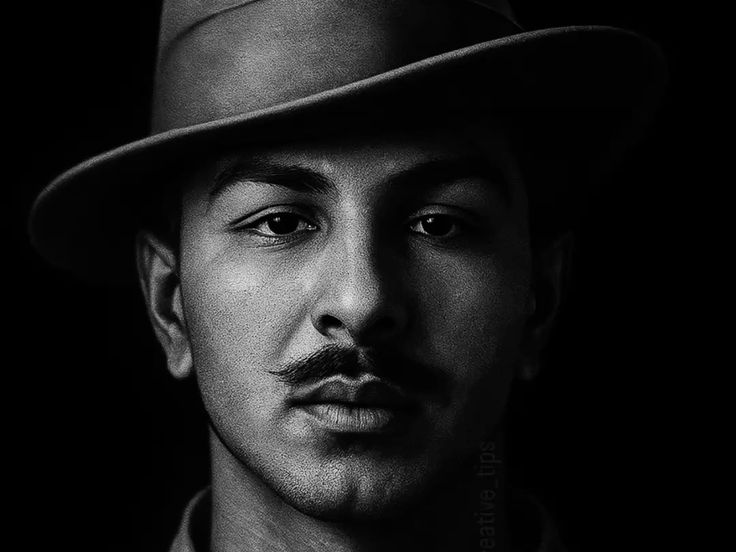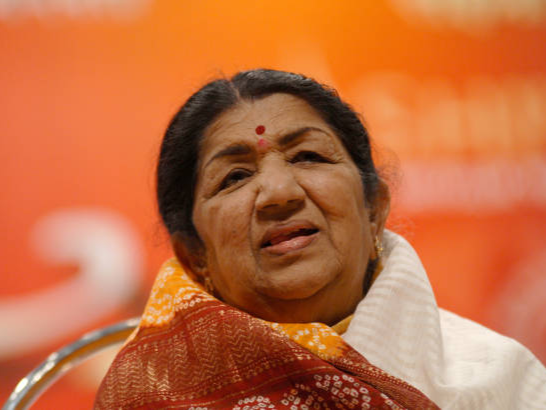The Origin Story Nobody Asked For (But Everyone Got)
So you want to know about Narendra Modi’s biography? Buckle up, because this isn’t your average LinkedIn success story this is the kind of plot twist that would make Bollywood directors weep with jealousy. We’re talking about a guy who went from helping his dad sell tea at a railway station to becoming the Prime Minister of India three times in a row. Yes, THREE. That’s right, while most of us are still figuring out how to adult properly, this man decided to basically become the main character of India’s political soap opera.
The RSS Years: When Modi Joined India’s Most Exclusive (And Controversial) Club
At the ripe old age of eight when most of us were still eating mud and calling it chocolate Modi was introduced to the Rashtriya Swayamsevak Sangh (RSS). For the uninitiated the RSS is like that super intense gym bro who never misses leg day, except instead of protein shakes, they’re serving up Hindu nationalism with a side of discipline and organization. Modi became a balswayamsevak (junior cadet) and met his political mentor, Lakshmanrao Inamdar.
Fast forward to 1971 and Modi became a full time pracharak (campaigner) for the RSS. Now, here’s where his biography reads like a spy thriller: During the Emergency declared by Indira Gandhi in 1975, when political opponents were being jailed faster than you can say “constitutional crisis,” Modi went underground. And we’re not talking metaphorically this man literally disguised himself as a monk and a Sikh to avoid arrest while printing anti government pamphlets. James Bond who?
He lived the ascetic pracharak life no marriage, no gold rimmed spectacles, basically the minimalist lifestyle influencers wish they could commit to. But unlike your favorite Instagram monk, Modi was busy coordinating opposition movements and creating safe houses for political refugees. He even wrote a book during this period called Sangharsh Ma Gujarat (In the Struggles of Gujarat). Meanwhile, most of us can’t even finish writing our annual performance reviews.
The Gujarat Era: Economic Miracle or PR Masterclass?
In 2001, Modi became the Chief Minister of Gujarat. And let me tell you, his tenure was about as uncontroversial as a family WhatsApp group during election season. On one hand, you had the “Gujarat Model” of development infrastructure upgrades, business-friendly policies, and economic growth rates that made other states jealous. The state’s GDP grew at 9.8% compared to India’s 7.7% between 2000 and 2010. Industries were flourishing, roads were being built and Gujarat was basically becoming the poster child for state-level development.
But then there’s the other side of the coin that nobody wants to talk about at dinner parties: the 2002 Gujarat riots. Following the Godhra train burning incident that killed 59 Hindu pilgrims, riots erupted across Gujarat, killing over 1,000 people mostly Muslims. Modi’s role in these events has been debated more intensely than whether chai should have elaichi or not. Critics accused him of deliberately allowing the violence, with senior police officer Sanjiv Bhatt claiming Modi told officials to let Hindus “vent their anger”. Modi was eventually cleared by a Special Investigation Team in 2012, but the controversy followed him like that embarrassing childhood photo your mom loves to show everyone.
Real talk: The man was banned from entering the US until 2014 because of this. The UK also refused to engage with him until 2012. That’s the kind of international reputation that makes your LinkedIn profile look really interesting.
The 2014 Campaign: When “Chai Pe Charcha” Broke the Internet (Before Breaking the Internet Was Cool)
Here’s where Modi’s biography gets absolutely wild. Congress leader Mani Shankar Aiyar made a snide remark about Modi’s “chaiwala” origins, basically trying to mock his tea-selling background. Big mistake. HUGE. Modi’s team turned that insult into the most epic political comeback of the decade with the “Chai Pe Charcha” campaign.
Picture this: Modi sitting at a tea stall in Ahmedabad, sipping chai and simultaneously doing a live video conference with 1,000 tea stalls across 300 cities in India. It was like a TED Talk meets Zoom call meets your local nukkad ka chai stall, except with better production values and actual political consequences. His campaign slogan? “Achhe din aane wale hain” (Good days are coming). Whether those good days actually came is still up for debate in comment sections across the internet.
Prime Minister Modi: Three Terms and Counting (Because Apparently Twice Wasn’t Enough)
In 2014, Modi led the BJP to a landslide victory the first time since 1984 that a party won an absolute majority. Then he did it again in 2019. And then, because apparently he’s collecting prime ministerial terms like Pokémon cards, he won a third term in 2024 though this time with a slightly less comfortable majority.
His tenure has been let’s call it “eventful.” On the achievements side, you’ve got:
- Infrastructure Development: Highway construction went from 12 km per day to 28 km per day. That’s basically one highway every time you binge watch a Netflix series.
- Digital India: UPI transactions made India a global leader in digital payments. Your mom can now send you money via phone no more excuses about not having cash.
- Rural Development: 3.5 lakh km of rural roads built under PM Gram Sadak Yojana.
- Welfare Schemes: 81 crore people receiving free food grains, 15 crore households with tap water connections and 4 crore homes under PMAY.
But then there’s the other stuff that makes family group chats explode:
- Demonetization (2016): Modi banned 85% of currency in circulation overnight. The move was supposed to curb black money but mostly succeeded in creating the world’s longest ATM queues and a million memes.
- Citizenship Amendment Act (CAA) and NRC: These policies sparked nationwide protests, with critics arguing they discriminated against Muslims. Modi’s response? Essentially “Trust me bro” with a side of “Urban Naxals are spreading lies”.
- The 2002 Gujarat Riots Shadow: Despite legal clearances, the BBC made a documentary in 2023 titled “India: The Modi Question” that revived the debate. The Indian government promptly blocked it, because nothing says “we’re totally fine” like aggressively censoring content.
The Foreign Policy Tightrope: Making Friends While Buying Russian Oil
Modi’s foreign policy is like trying to maintain friendships with everyone in your friend group who hates each other. He’s hugging Putin while shaking hands with Biden, doing yoga with world leaders and somehow managing to stay on speaking terms with pretty much everyone.
India’s relationship with Russia has been described as “special and privileged”. Translation: India buys cheap Russian oil (about 37% of its imports) while the US glares disapprovingly from across the room. When Trump slapped a 50% tariff on Indian goods partly because of this, Modi basically said “We’ll buy from whoever offers the best deal, thanks”. That’s what we call diplomatic sass.
Meanwhile, India’s also strengthening ties with the UAE, USA and basically everyone else through what they call “multi-alignment”. It’s like being friends with both the popular kids and the nerds, and somehow pulling it off.
The Leadership Style: Part CEO, Part Saint, Part Influencer
Modi’s leadership style has been analyzed more than your crush’s Instagram stories. Scholars describe him as “energetic, eccentric, arrogant and charismatic”. He’s known for:
- Micro management on steroids: The man chairs meetings via video conference to review infrastructure projects personally.
- Personal discipline: He works roughly 18 hours a day, which makes your “hustle culture” look cute.
- Image control: Every public appearance is carefully crafted, from his designer kurtas to his signature beard.
- Social media addiction: He posts on Twitter more than your friend who just got back from a Europe trip.
His mother, Hiraben (who passed away in 2022), famously told him: “Narendra, don’t ever take a bribe, never compromise on honesty”. And say what you will about his policies, but even his harshest critics can’t accuse him of personal corruption. That’s actually impressive in Indian politics.
The Controversies That Won’t Die (No Matter How Hard His PR Team Tries)
Let’s be real: Modi’s biography wouldn’t be complete without acknowledging the elephant in the room or rather the multiple elephants doing a dance routine while the room is on fire.
The 2002 Riots: Despite legal clearances, this remains the defining controversy of his career. Human rights organizations have used terms like “pogrom” and “ethnic cleansing” to describe the events. A UK government report from 2002 concluded Modi was “directly responsible” for creating a “climate of impunity”. Modi’s defense? A 2013 interview where he compared his feelings about the riots to the sadness one feels when a puppy is run over by a car a comment that went over about as well as a lead balloon.
Democratic Backsliding: Press freedom rankings have India at checks notes not great places. Critics argue that dissent is increasingly criminalized, with protesters and activists facing jail time.
Hindu Nationalism: Modi’s RSS background and his government’s policies from the CAA to the revocation of Article 370 in Kashmir have led to accusations of pushing a Hindu nationalist agenda at the expense of secularism.
The 2024 Election “Setback”: After claiming his party would win 400 seats, the BJP lost its absolute majority for the first time since 2014. Critics called it a “Pyrrhic victory” and a personal rebuke to Modi’s style of leadership. Suddenly, he needs coalition partners, which is like realizing you actually do need to respond to those group project texts.
The Modi Effect: Love Him or Hate Him, You Can’t Ignore Him
Here’s the thing about Modi: he’s polarizing in a way that makes pineapple on pizza debates look civil. His approval ratings have consistently been high, making him one of the most popular leaders globally. British Herald Magazine even named him the “world’s most powerful leader” in 2019.
But that popularity comes with a hefty side of controversy. His government has been accused of:
- Marginalizing minorities, particularly Muslims
- Restricting press freedom and civil liberties
- Pushing misleading statements and propaganda
- Creating a personality cult that makes North Korea look subtle
Yet, his supporters will point to:
- Infrastructure development that’s actually visible
- Poverty reduction (25 crore people escaped multidimensional poverty in nine years)
- India’s growing global influence
- A corruption free image in a country where that’s rarer than good WiFi in rural areas
From Vadnagar to Delhi: The Ultimate Comeback Story (Or Warning Sign, Depending on Your Politics)
Modi’s biography reads like a screenplay written by someone who was told “make it dramatic, but also make sure people argue about it for decades.” From a child selling tea to help his family make ends meet, to going underground during the Emergency, to transforming Gujarat’s economy, to becoming a controversial but undeniably impactful Prime Minister the man’s life is nothing if not eventful.
His journey has inspired millions who see in him proof that India’s caste-based barriers can be overcome. The fact that someone from the OBC Ghanchi community (oil pressers) could become Prime Minister is genuinely significant in a country where social hierarchies have historically determined destinies.
But his critics argue that this inspiring narrative comes packaged with communal politics, democratic erosion and policies that disproportionately affect marginalized communities. The BBC documentary that the Indian government tried so hard to block raised questions that won’t go away just because they’re inconvenient.
Modi has fundamentally reshaped Indian politics, bringing Hindu nationalism from the fringes into the mainstream. Whether you see this as India finally embracing its “true” identity or as a dangerous departure from secular principles depends entirely on where you sit on the political spectrum and which WhatsApp groups you’re in.
The Man Behind the Image: What We Actually Know (Which Isn’t Much)
Here’s something wild: for someone who’s constantly in the public eye, Modi remains intensely private. He’s married (arranged marriage at 18 to Jashodaben Modi), but they’ve lived separately for decades she lives in Gujarat while he’s been in politics. He doesn’t have children. His personal life is so minimal it makes Marie Kondo look like a hoarder.
His daily routine reportedly starts at 5 AM with yoga. He’s a vegetarian and doesn’t drink alcohol. He meditates, writes poetry in Gujarati and has a thing for fancy kurtas that probably cost more than your rent. His image is so carefully curated that his selfies became a campaign strategy.
But who is he really? Beyond the designer clothes and the social media posts and the carefully choreographed public appearances? That’s the million dollar question that even his biographers struggle to answer. He’s described as both a visionary leader and an autocratic ruler, a development champion and a divisive figure, a man of the people who lives in a carefully constructed bubble.
The Legacy Question: Hero, Villain or Complicated Human?
Modi’s story isn’t over the man’s 74 and showing no signs of slowing down. But what will his legacy be?
To his supporters: He’s the leader who restored India’s pride, modernized its infrastructure, brought development to the poor and made the country a force to be reckoned with on the global stage. He’s proof that in India, anyone can rise to the top regardless of their background.
To his critics: He’s the man who presided over one of the worst communal riots in independent India’s history, systematically undermined democratic institutions, marginalized minorities and used divisive politics to consolidate power.
The truth? It’s probably somewhere in the middle, which is the most unsatisfying answer possible but also the most honest one. Modi is neither the savior his supporters make him out to be nor the villain his critics portray. He’s a product of his time, his background and his choices some inspired, some questionable, all consequential.
His biography is still being written, one controversial policy and infrastructure project at a time. Whether it ends up as an inspiring tale of democratic possibility or a cautionary story about the fragility of secular institutions depends on what happens next and who’s writing the final chapters.
Conclusion: The Tea Seller Who Made It (And Won’t Let You Forget It)
So there you have it the story of how a kid from Vadnagar who sold tea at a railway station became the Prime Minister of the world’s largest democracy, rewrote the rules of political campaigning and managed to be simultaneously one of the most beloved and most controversial leaders in modern Indian history.
Love him, hate him or fall somewhere in the confused middle you can’t deny that Modi’s journey is one hell of a story. It’s messy, it’s complicated, it’s polarizing, and it’s quintessentially Indian. Whether you see him as proof that “achhe din” are here or as a warning about the dangers of personality cults probably says more about your politics than about him.
Now if you’ll excuse me, I need to go have some chai and contemplate how a beverage became a political movement.










